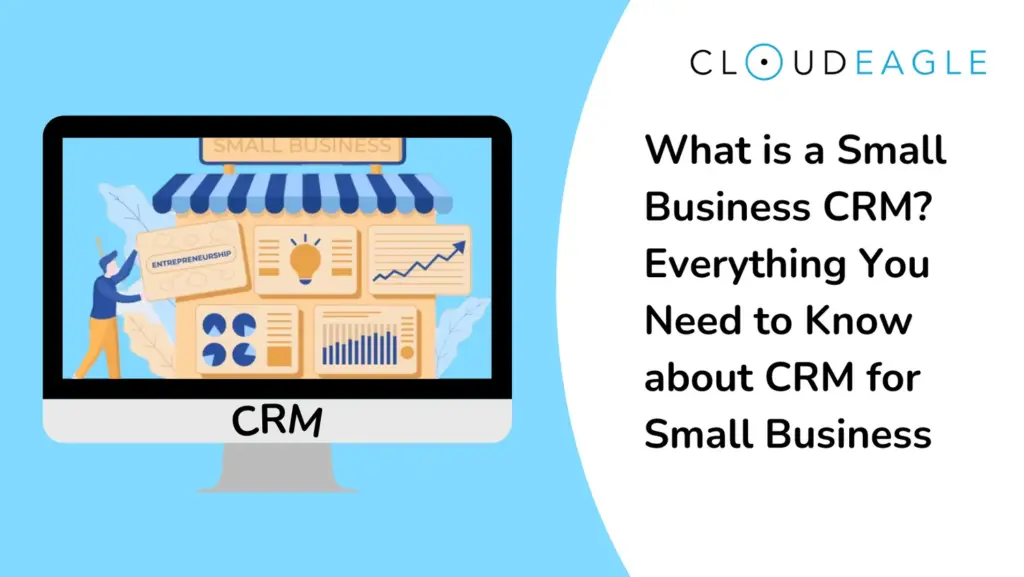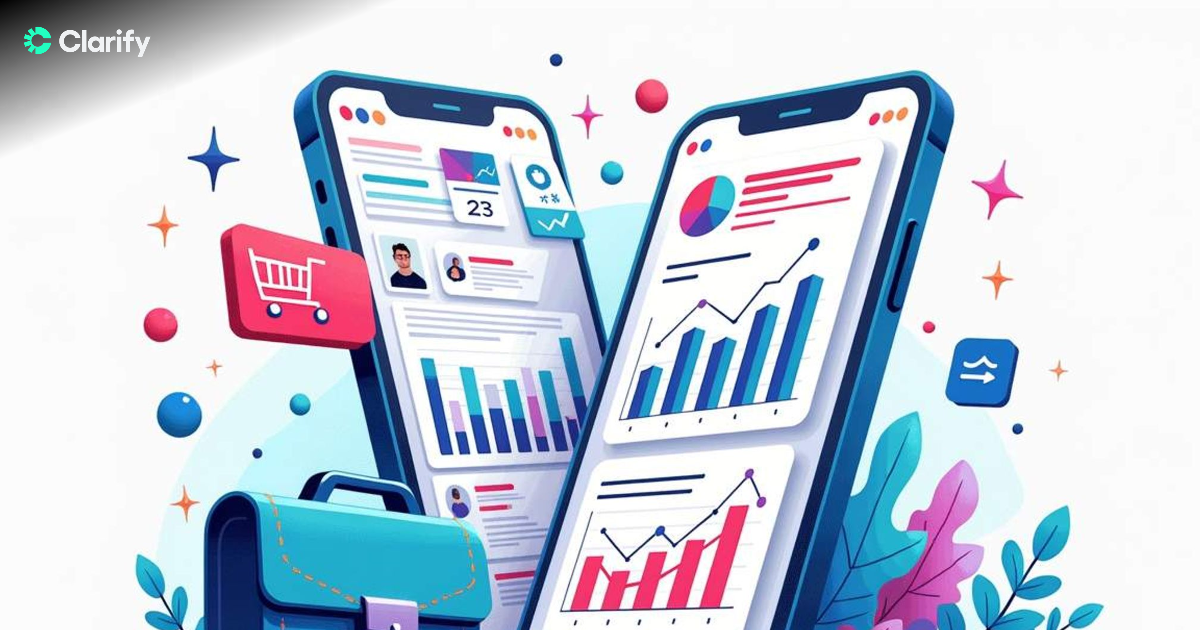
Small Business CRM Basics: Navigating the World of Customer Relationship Management in 2025
Running a small business is a whirlwind. You’re juggling a million things at once – from product development and marketing to sales and customer service. In the midst of this chaos, it’s easy for customer relationships to fall by the wayside. That’s where a Customer Relationship Management (CRM) system comes in. Think of it as your central hub for all things customer-related, helping you to streamline processes, improve communication, and ultimately, boost your bottom line. This comprehensive guide to small business CRM basics in 2025 will walk you through everything you need to know, from understanding the core concepts to selecting the right software and implementing it successfully.
What is a CRM? Decoding the Acronym
Let’s start with the basics. CRM stands for Customer Relationship Management. At its core, a CRM is a technology solution that helps businesses manage their interactions with current and potential customers. It’s more than just a contact list; it’s a comprehensive system for:
- Collecting Customer Data: Gathering information about your customers, including contact details, purchase history, communication logs, and more.
- Organizing Customer Data: Centralizing all this information in a single, accessible location.
- Analyzing Customer Data: Using the data to gain insights into customer behavior, preferences, and needs.
- Improving Customer Interactions: Personalizing your interactions and providing better customer service.
- Automating Tasks: Streamlining repetitive tasks, such as email marketing and follow-ups.
In essence, a CRM helps you understand your customers better, enabling you to build stronger relationships and drive sales growth. Without a CRM, valuable customer data can get scattered across spreadsheets, email inboxes, and even in your employees’ heads. This makes it difficult to get a complete picture of your customers and to provide them with the personalized experience they deserve.
Why Does Your Small Business Need a CRM in 2025?
The business landscape is constantly evolving. Customers expect personalized experiences, and they have more options than ever before. In 2025, a CRM is not a luxury; it’s a necessity for any small business that wants to thrive. Here’s why:
- Enhanced Customer Relationships: CRM systems allow you to personalize your interactions with customers, making them feel valued and understood.
- Improved Sales Performance: By tracking leads, managing the sales pipeline, and automating sales tasks, a CRM can significantly boost your sales conversion rates.
- Increased Efficiency: Automating tasks like email marketing and appointment scheduling frees up your team to focus on more strategic activities.
- Better Data-Driven Decisions: CRM provides valuable insights into customer behavior and preferences, enabling you to make informed decisions about your products, services, and marketing campaigns.
- Streamlined Customer Service: Accessing customer information quickly allows your team to provide faster and more efficient customer service.
- Competitive Advantage: In a competitive market, a CRM can give you a significant edge by helping you deliver superior customer experiences.
Think of it this way: a CRM is like having a personal assistant for your customer relationships. It helps you stay organized, informed, and responsive, ultimately leading to happier customers and a more successful business.
Key Features to Look for in a Small Business CRM
Not all CRMs are created equal. The features you need will depend on your specific business needs, but here are some essential features to look for when choosing a CRM for your small business in 2025:
Contact Management
This is the foundation of any CRM. It allows you to store and manage all your customer contact information, including names, addresses, phone numbers, email addresses, and social media profiles. Good contact management features should include the ability to:
- Segment your contacts based on various criteria.
- Add custom fields to store specific information relevant to your business.
- Import and export contact data easily.
- Integrate with other tools, such as email marketing platforms.
Lead Management
Lead management features help you track potential customers through the sales pipeline. This includes:
- Lead Capture: Capturing leads from various sources, such as website forms, landing pages, and social media.
- Lead Scoring: Assigning scores to leads based on their engagement and behavior to prioritize the most promising prospects.
- Lead Nurturing: Automating email campaigns and other activities to nurture leads through the sales funnel.
- Sales Pipeline Management: Visualizing the sales pipeline and tracking the progress of each lead.
Sales Automation
Sales automation features streamline the sales process and free up your sales team’s time. This can include:
- Automated Email Marketing: Sending targeted email campaigns to nurture leads and promote your products or services.
- Task Automation: Automating repetitive tasks, such as follow-up emails and appointment scheduling.
- Workflow Automation: Creating automated workflows to guide leads through the sales process.
- Sales Reporting and Analytics: Tracking sales performance and identifying areas for improvement.
Customer Service
A CRM can also help you improve your customer service by providing features such as:
- Help Desk Integration: Integrating with your help desk software to provide seamless customer support.
- Ticket Management: Tracking and managing customer support tickets.
- Knowledge Base: Creating a knowledge base to provide customers with self-service support.
- Customer Feedback Management: Collecting and analyzing customer feedback to improve your products and services.
Reporting and Analytics
Data is the lifeblood of any business. Reporting and analytics features allow you to track key performance indicators (KPIs) and gain insights into your business performance. Look for a CRM that offers:
- Customizable Dashboards: Displaying key metrics in a visually appealing and easy-to-understand format.
- Pre-built Reports: Providing pre-built reports on sales, marketing, and customer service performance.
- Custom Report Creation: Allowing you to create custom reports to track specific metrics relevant to your business.
- Data Visualization: Presenting data in charts and graphs to make it easier to identify trends and patterns.
Integration with Other Tools
Your CRM should integrate seamlessly with other tools you use, such as:
- Email Marketing Platforms: (e.g., Mailchimp, Constant Contact)
- Social Media Platforms: (e.g., Facebook, Twitter, LinkedIn)
- Accounting Software: (e.g., QuickBooks, Xero)
- E-commerce Platforms: (e.g., Shopify, WooCommerce)
- Project Management Software: (e.g., Asana, Trello)
Integration ensures that data flows seamlessly between your different tools, eliminating the need for manual data entry and reducing the risk of errors.
Choosing the Right CRM for Your Small Business in 2025
Selecting the right CRM is a crucial decision. It’s an investment that can either propel your business forward or hold it back. Here’s a step-by-step guide to help you choose the best CRM for your small business in 2025:
1. Assess Your Needs and Goals
Before you start looking at different CRM options, take the time to assess your needs and goals. Consider the following questions:
- What are your biggest pain points in managing customer relationships?
- What are your key business objectives? (e.g., increase sales, improve customer retention, streamline customer service)
- What features are essential for your business?
- What is your budget?
- How many users will need access to the CRM?
- What integrations are important for your business?
Answering these questions will help you narrow down your options and identify the CRMs that are the best fit for your needs.
2. Research Different CRM Options
Once you have a clear understanding of your needs and goals, it’s time to research different CRM options. There are many CRM providers available, so it’s important to do your homework. Here are some popular CRM options for small businesses in 2025:
- HubSpot CRM: A popular and user-friendly CRM with a free version and a range of paid plans.
- Zoho CRM: A comprehensive CRM with a wide range of features and affordable pricing.
- Salesforce Sales Cloud: A powerful CRM with a wide range of customization options, suitable for larger businesses.
- Pipedrive: A sales-focused CRM with a visual pipeline and intuitive interface.
- Freshsales: A sales CRM with built-in phone and email capabilities.
- monday.com: While primarily a project management tool, monday.com offers CRM capabilities.
Read reviews, compare features, and check pricing to find the CRMs that seem like a good fit for your business.
3. Consider Your Budget
CRM pricing varies widely, from free versions to enterprise-level solutions. Determine how much you’re willing to spend on a CRM and factor in the cost of implementation, training, and ongoing support. Consider the following pricing models:
- Free Plans: Offer basic features and are a good starting point for small businesses.
- Subscription Plans: Typically based on the number of users and the features included.
- Tiered Pricing: Offers different plans with varying features and price points.
- Custom Pricing: For larger businesses with complex needs.
Be sure to factor in the long-term costs of the CRM, including any add-ons or integrations you may need.
4. Evaluate User-Friendliness
The CRM should be easy for your team to use. Otherwise, they won’t use it, and you won’t get the full benefit of the system. Look for a CRM with an intuitive interface, easy-to-understand navigation, and helpful tutorials. Consider:
- Ease of Use: Is the interface clean and uncluttered?
- Training Resources: Are there tutorials, documentation, and customer support available?
- Mobile Accessibility: Does the CRM have a mobile app?
- Customization Options: Can you customize the CRM to fit your specific needs?
5. Test Drive the CRM
Many CRM providers offer free trials or demos. Take advantage of these opportunities to test drive the CRM and see if it’s a good fit for your business. This will give you a hands-on experience with the features and functionality of the CRM and allow you to assess its user-friendliness.
6. Plan for Implementation
Once you’ve chosen a CRM, you’ll need to implement it. This involves migrating your data, training your team, and configuring the CRM to fit your business needs. Create a detailed implementation plan that includes:
- Data Migration: Transferring your existing customer data into the CRM.
- Customization: Configuring the CRM to fit your specific business processes.
- User Training: Training your team on how to use the CRM.
- Integration: Integrating the CRM with your other tools.
- Ongoing Support: Establishing a plan for ongoing support and maintenance.
Consider enlisting the help of a CRM consultant or implementation specialist to ensure a smooth implementation process.
Implementing Your CRM: A Step-by-Step Guide
Successfully implementing a CRM is crucial for realizing its benefits. Here’s a step-by-step guide to help you through the implementation process:
1. Data Migration
This is often the most time-consuming and critical step. You’ll need to migrate your existing customer data into the CRM. This may involve:
- Data Cleaning: Cleaning up your data to ensure its accuracy and consistency.
- Data Formatting: Formatting your data to match the CRM’s requirements.
- Data Import: Importing your data into the CRM.
Consider using a data migration tool to automate the process and minimize the risk of errors. Ensure you back up all data before migrating.
2. Customization
Tailor the CRM to fit your business processes. This may involve:
- Configuring Fields: Adding custom fields to store specific information relevant to your business.
- Creating Workflows: Automating tasks and processes to streamline your workflow.
- Setting Up Integrations: Integrating the CRM with your other tools.
Spend time configuring the CRM to match your specific business needs and workflows. This is where the CRM truly becomes your own.
3. User Training
Train your team on how to use the CRM. This is essential for ensuring that everyone is using the system correctly and consistently. Provide:
- Training Materials: Develop training materials, such as user manuals and video tutorials.
- Hands-on Training: Provide hands-on training to help your team learn how to use the CRM.
- Ongoing Support: Provide ongoing support to answer questions and address any issues.
The more comfortable your team is with the CRM, the more effectively they will use it.
4. Data Entry and Adoption
Ensure everyone is actively entering customer information and using the CRM daily. This requires:
- Clear Expectations: Set clear expectations for data entry and CRM usage.
- Monitoring and Feedback: Monitor CRM usage and provide feedback to your team.
- Lead by Example: Lead by example by using the CRM yourself.
Successful adoption is key to realizing the full benefits of the CRM.
5. Ongoing Optimization
Continuously optimize your CRM to improve its effectiveness. Regularly:
- Review Performance: Review your CRM performance and identify areas for improvement.
- Refine Processes: Refine your processes to improve efficiency.
- Update and Adapt: Update and adapt your CRM to meet your changing business needs.
CRM implementation is an ongoing process, not a one-time event. Stay proactive and keep improving.
Best Practices for CRM Success
Implementing a CRM is just the first step. To maximize its benefits, you need to follow some best practices:
- Define Your CRM Goals: Clearly define your goals for using the CRM, such as increasing sales, improving customer retention, or streamlining customer service.
- Get Buy-In from Your Team: Make sure your team understands the benefits of the CRM and is committed to using it.
- Keep Your Data Clean and Accurate: Regularly clean up your data to ensure its accuracy and consistency.
- Train Your Team Thoroughly: Provide comprehensive training to your team on how to use the CRM.
- Use the CRM Consistently: Make the CRM an integral part of your daily workflow.
- Monitor Your Performance: Track your CRM performance and make adjustments as needed.
- Seek Customer Feedback: Use the CRM to gather customer feedback and improve your products and services.
- Integrate with Other Tools: Integrate your CRM with your other tools to streamline your workflow.
- Stay Updated with New Features: Keep up-to-date with the latest features and updates of your CRM.
By following these best practices, you can maximize the value of your CRM and drive significant results for your small business.
CRM Trends to Watch in 2025
The CRM landscape is constantly evolving. Here are some trends to watch in 2025:
- Artificial Intelligence (AI): AI is being integrated into CRM systems to automate tasks, personalize customer interactions, and provide predictive insights.
- Mobile CRM: Mobile CRM is becoming increasingly important, allowing businesses to access customer data and manage interactions on the go.
- Customer Data Platforms (CDPs): CDPs are becoming increasingly popular for collecting and managing customer data from various sources.
- Personalization: Businesses are focusing on personalizing customer experiences to build stronger relationships and drive sales.
- Social CRM: Social CRM is integrating social media data into CRM systems to help businesses understand their customers better.
- Emphasis on Data Privacy: With increasing concerns about data privacy, CRM providers are focusing on data security and compliance.
Staying informed about these trends will help you make informed decisions about your CRM strategy and stay ahead of the competition.
Conclusion: Embracing the Future of Customer Relationships
In 2025, a CRM is no longer optional for small businesses; it’s a necessity. By understanding the basics, choosing the right system, and implementing it effectively, you can transform your customer relationships, boost your sales, and drive sustainable growth. This guide has provided you with the essential information you need to navigate the world of small business CRM. Remember to assess your needs, research your options, plan for implementation, and stay informed about the latest trends. With the right CRM in place, your small business can thrive in the competitive landscape of 2025 and beyond. Embrace the power of customer relationship management and unlock the full potential of your business.

